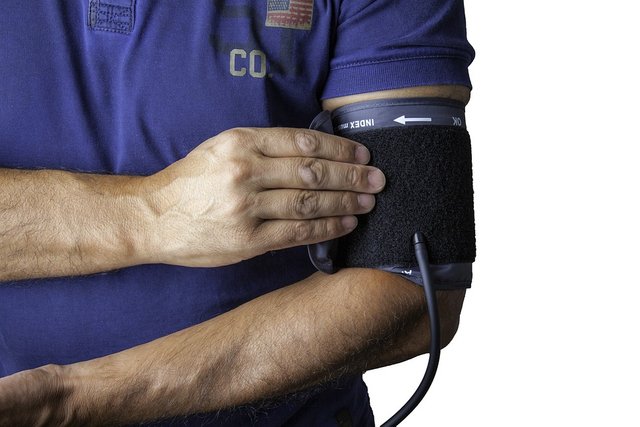Understanding the Polygraph Examination (PE) in Depths

Introduction
The topic about what the polygraph is, how does it work, how the procedure is conducted and what to expect of such examination is shrouded in mythology, misconceptions and wrong interpretation which leads to fear, scepticism and ignorance. Step by step I would like to clear everything about this topic and provide to you facts backed up by scientific sources and the experience by professionals in this field since it was invented.
So far we have discussed what doеs thе polygraph mеasurе and I have introduced to you the polygraph test as a scientific method. Because I work in a private company, which is sometimes hired by the police, but mostly works in the private sector with all kinds of different companies I introduced you to the application of psychology in the corporate and cyber security where the polygraph was mentioned as a pre-employment method. On average we examine more than 100 job applicants using the polygraph.
Last week we discussed what you basically need to know before a polygraph examination (PE). This was the fourth post of the series about the polygraph device and procedure. If you missed them, please read them and discuss after.
Today I would like to dive deeper into the procedure and the understanding of all steps of the PE.

What is the nature of the polygraph examination?
The truth is that the polygraph procedure has emerged from police practice as a tool to confirm or revoke the involvement of a suspect in certain crime. The polygraph was used strictly by the police and in the beginning there were no scientific tests, formats, general rules or code of ethics. There were no training courses, no agreement on how the results should be scored and interpret etc.
Along with the years of its development, the polygraph method began to shape as a scientific method, backed up by a lot of research and statistics. Different techniques have emerged, general rules were created and a code of ethics was established. Slowly the application of the polygraph was transferred in the corporate environment and was successfully applied for pre-employment and investigation of fraud, theft and other disloyal actions.
Nowadays the USA and several other countries have banned the polygraph as a pre-employment technique. In the states the employees are protected by law called Employee Polygraph Protection Act (EPPA).
In general, businesses cannot request, suggest or require any job applicant to take a pre-employment polygraph examination. Secondly, businesses can request a current employee to take a polygraph examination or suggest to such a person that a polygraph examination be taken, only when specific conditions have been satisfied. However, the employer cannot require current employees to take and examination, and if an employee refuses a request or suggestion, the employer cannot discipline or discharge the employee based on the refusal to submit to the examination.
This law applies for pre-employment also. So forget being examined by the polygraph, if you work in the States. However, if you are applying for a government position, you will be examined on several topics. Regularly.
Today, the polygraph examination has a dualistic nature. On one hand it is successfully applied by the police in investigations, while on the other in many countries it could be used as a pre-employment method.
In both cases, the general structure of the polygraph examination is the same. But there are slight important differences so let’s break it down and discuss.

Structure of the polygraph examination.
As I already mentioned in my last article, the PE has four main phases.
The pre-test interview.
Usually in this part you will be asked standart questions related to your biographical information. You will be introduced to the polygraph method, how the device works, what does it measure and how the examination will be conducted step by step. You will be introduced to the topic of the examinations and the questions included in the test. This is very important part, because the examiner must tell you everything in advance. You will be asked several general questions about your certain health condition and only after everything is explained, you will be asked to sign a declaration of consent, if you agree to be examined. Nobody will violate your human rights and force you to be examined by the polygraph.
The pre-test interview must follow all the rules of how an interview should be conducted. The person is respected, listened to and if required answered to their questions also. It is never conducted in an offensive manner. Private questions must not be asked. The person is never interrupted or manipulated, ashamed or provoked by the interviewer. The pre-test interview is not an interrogation! You have every right (and obligation if you ask me), to ask questions, talk about what you find inappropriate in the procedure and discuss everything which you want to know more about, before you do the test.
Important note: There are no hidden, surprise or private question in the question list !
Attaching the sensors
This part is not ‘officially’ differentiated in the examination, but it is a really stressful moment for the examinee and I would like to discuss it in details.
The polygraph sensors should be explained in the pre-test interview. They are harmless and are not intended to hurt you, electrocute you or torture you. There are rules which the examiner must follow when attaching them to the examinee.
The sensors must not hurt the examinee.

Note: Do not mistake discomfort with harm. The polygraph examination is not a walk in the park and surly it’s not a pleasant experience. However, it is not a painful one also. Whenever you feel pain or discomfort, notify the expert about it.
The examiner has no right to physically touch the examinee.
Especially if they are from the opposite gender. All the sensors have the option to be attached to the examinee without touching them anywhere.
Note: Do not accept excuses like “I have to touch your hand, chest or etc. in order to place the sensor”. No they have not!
Same thing applies when the sensors are removed. In no scenario the expert must physically touch the examinee.
The examination.
After everything is properly explained to you and you have discussed and understood the relevant topic and the questions in the question list, the sensors would be attached to your body and the test will begin as the examiner explained. At this point you should’ve already been given instructions which you must follow during the examination.
Usually this part is the shortest one. On average, one question set reading lasts around 3 to 4 minutes.
Note: The questions will be repeated several times, depending on the test format and polygraph technique. It is perfectly normal to take a rest and then return to the test etc.
Scoring.
The examinee does not participate in this part. The examiner scores the result of the test and makes a conclusion based on the general rules accepted for the technique they use.

Post-test interview / interrogation
This is the point where there are major differences if you are perpetrator of a crime or job candidate.
The post-test interview is the part when the examiner provides the results to the examinee. Depending on the company policy this part might be skipped and the examinee never gets their result, if not specifically request it (In person or by email etc.). You have every right to ask for the test to be deleted from the company’s database also.
But if the examination is conducted by the police, this part is never skipped. This is when the interview turns into interrogation and the rules change. Unlike the interview, the interrogation is not a part where the investigators would sit and listen the perpetrators point of view and personal opinion. The purpose of every interrogation is confession and to achieve this sometimes a lot of psychological pressure is required.

Things to keep in mind:
The polygraph examination takes time.
On average one polygraph procedure lasts between one hour and three hours. The examination with the polygraph device itself is the shortest part. What takes most of the time is the pre-test interview, discussing the topic and the questions and explaining the polygraph. Of course there are several breaks included, so whenever you like, you could use your time to go to the bathroom, smoke a cigarette etc. Be patient and do not expect for it to be over in 15 minutes. That’s impossible !
Usually the polygraph examination will be audio and video recorded.
Why? There are several important reasons.
Your own protection.
Being audio and video recorded means that you have absolute proof about everything which happened in the room during the examination. This means that the examiner cannot manipulate your answers, results, statements, information etc. This is huge advantage for the examinee.
We had cases in which an examiner does not record video, but only audio. The reason behind it was because he was sexually abusing his female examinees by tightening the breathing sensors around their breasts and moving it up and downwards.
You can take the recording and have it examined by other experts.
If you are a victim of corrupt practice by an examiner who considers themselves “an expert”, you can request the recording of the examination, along with your results and have them examined by independent company or examiner.
In our practice, we had cases when corrupt examiners were paid to fabricate results. Of course you cannot do that when you have the recording of the person.

Conclusion and discussion
Hopefully this short article was somehow enlightening to you and providing some solid knowledge about how the polygraph examination must be conducted. Now you know what to expect and what to do if things are not going the way they should be.
Please, if you have any questions, or you would like to learn more about a specific aspect of the practice, ask in the comments ! Thanks for reading ! Upvote, re-steem, comment and support for more !

I agree that employees or job applicants should not be required to undergo polygraph examination. It is not necessary. They should be judged mainly on their competence, on whether they are a perfect candidate for the job position.
Polygraph examination should mainly be used in police investigation, which is why it was invented in the first place.
I thought its only the law enforcement agencies that use the polygraph to examine people, well, its nice to learn something new.
I used to think the polygraph cannot give me away but i guess i know better now
Thank you for your comment.
Well, yeah it can :D
Your article has made me feel more relaxed about the polygraph examination. I have only seen it in Hollywood movies being used to interview individuals especially in cases where the stakes are high or in law enforcement.
I never thought it could be used as a pre-employment tool. I appreciate the need for it in the investigation of fraud. Banks in Nigeria need that technology because it usually happens that when a fraud is committed, members of the unit in which it happened are relieved of their duties or worse, prosecuted without any persons trying to discover the truth and each individual's culpability.
Thanks for the education.
Thank you for your thoughts, @churchboy.
I am glad you found this article interesting.
I absolutely agree that there are certain fields in the private sector which need the polygraph practice to step in as an investigative tool.
Sadly that is not always possible..